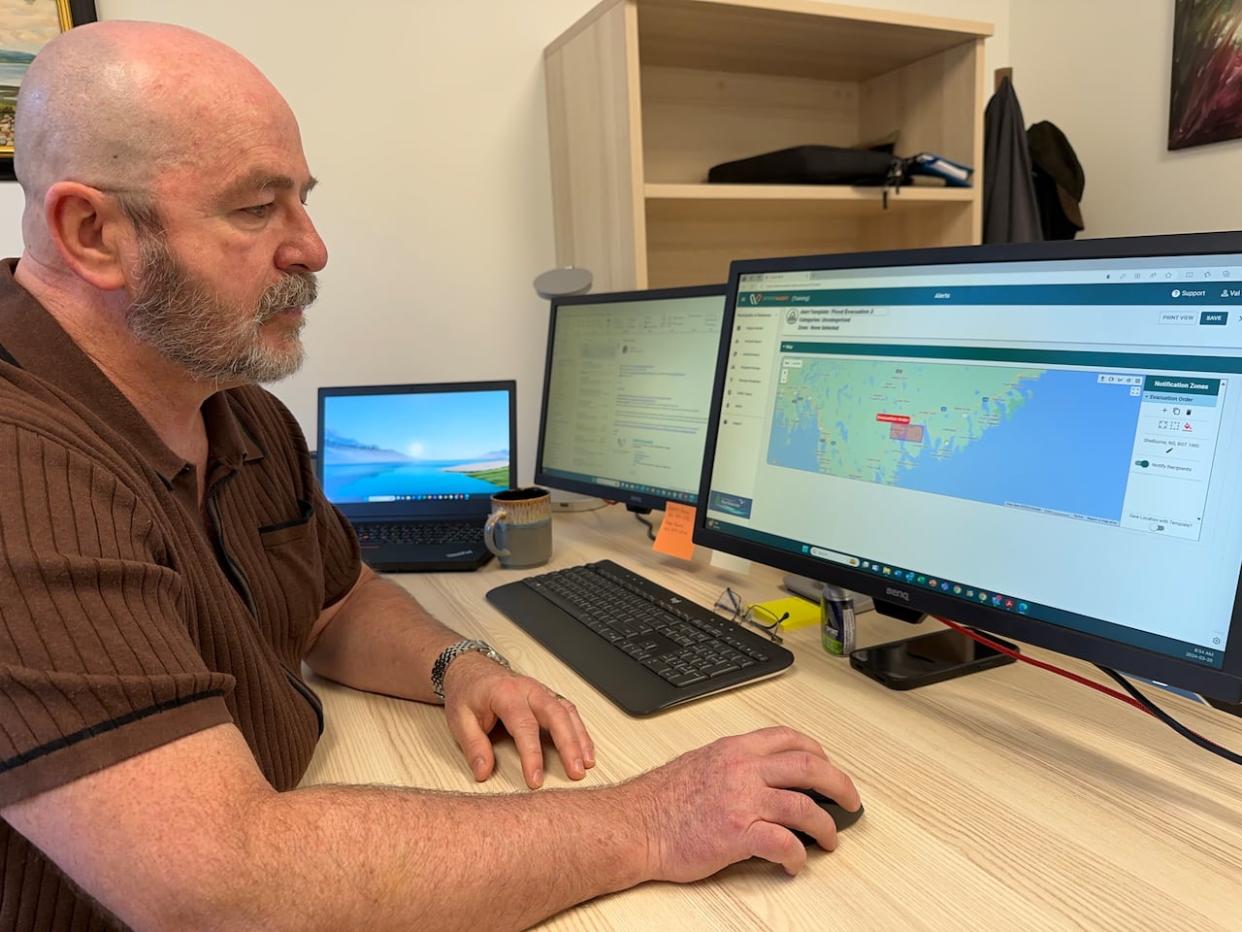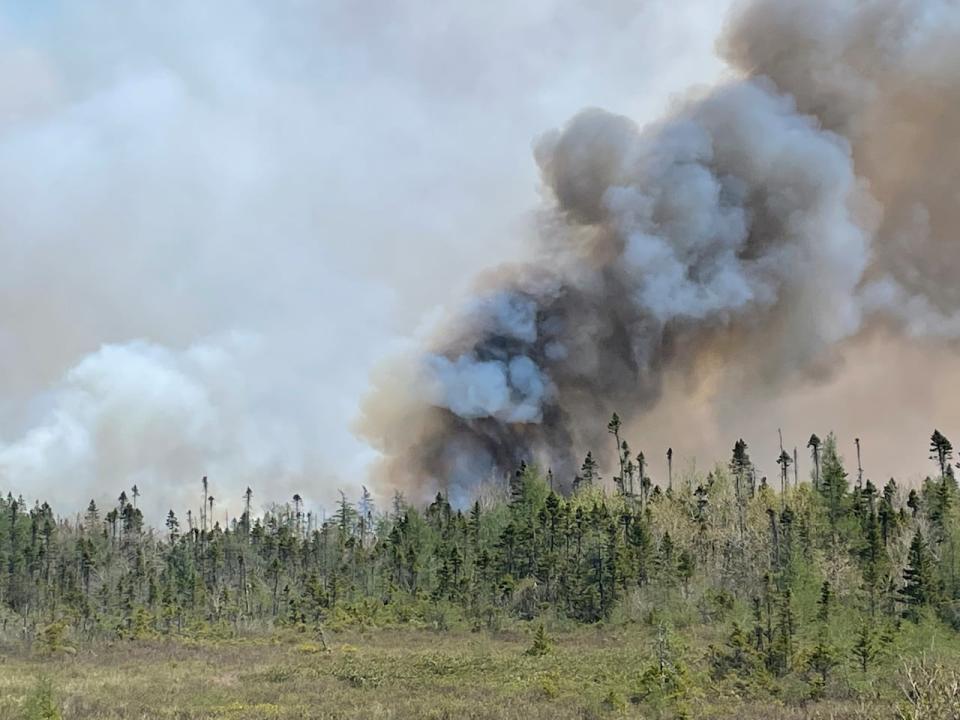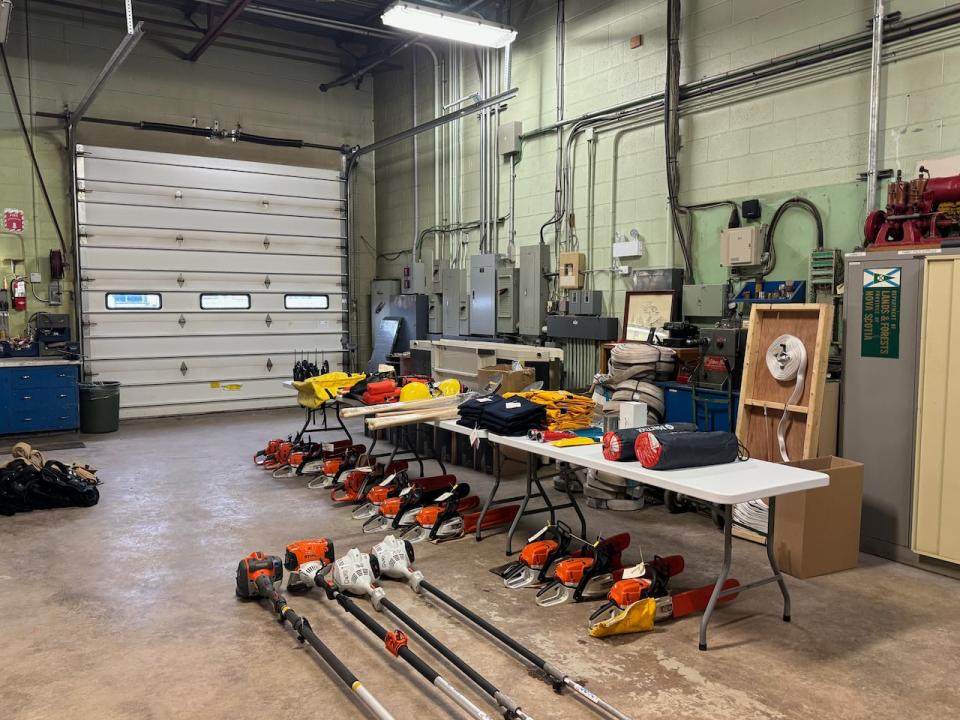Communities hit by Nova Scotia's biggest wildfire prepare for the next emergency

Communities hit hard last year by the largest wildlife on record in Nova Scotia are taking steps to cope with future emergencies, including improving communication with residents and recruiting more volunteer firefighters.
The municipalities of Shelburne and Barrington are acting on recommendations from a review of responses to the wildfire that broke out in May 2023 and destroyed dozens of homes as it burned more than 23,000 hectares of land.
Being able to get disaster alerts out to residents is a key goal, said Warren MacLeod, chief administrative officer of the Municipality of Shelburne.
"We struggled a lot with cell coverage within the municipality," he said. "Quite a few people that lived in the evacuation zones never got the ready alert, because they were in a blackout zone."
While MacLeod said some people got the message to leave their homes directly from RCMP officers going door to door, the municipality will test a new system this year.
Voyent Alert is a service that will allow news to be sent to residents using several platforms such as e-mail, voicemail, cellphones and landlines, through an app or a text message.
"This is a tool that will get the emergency information to people quicker through multiple means," MacLeod said. "Even if there's a cellphone blackout."
An advertising campaign will encourage all residents to subscribe, he said.

Most of the staff at the Municipality of Shelburne have now been provided special emergency training by the Province of Nova Scotia following last year's wildfire when only a small team of people had the training. (David Rockwood/Department of Natural Resources and Renewables)
As the wildfire spread last year, more than half of Shelburne's staff could not get to work due to vast evacuation zones, a problem identified in the review. So the municipality has created a new staffing system that will kick in during any future emergency.
It allows employees to work in pairs in overlapping shifts to ease the pressure. They can also draw on employees from neighbouring areas.
The majority of the staff have also already gone through emergency preparedness training offered by the province.
New firefighters 'step up' in Barrington
An unexpected consequence of the wildfires is that more people want to join local volunteer fire departments. Twenty five new firefighters have joined three departments in the Municipality of Barrington, taking the total number of members to about 130.
"When something like that happens, they realize that they should step up," said Dwayne Hunt, Barrington's fire service and emergency management co-ordinator.
It's a significant increase, Hunt said, considering attracting volunteer firefighters is not easy.
Funding from the popular firefighters 50-50 draw has also been a big factor in helping the municipality invest in new equipment, like protective gear that is lighter and designed for wildfires.
"Their normal structural firefighting gear is very heavy and bulky. And it's geared toward interior structural firefighting, so it's a lot heavier and you can't wear that fighting wildland fires because it's too hot," Hunt said.

New fire suppression tools are shown at the Shubenacadie depot of the Nova Scotia Department of Natural Resources and Renewables. (Daniel Jardine/CBC)
Federal and provincial funds have also helped the Department of Natural Resources and Renewables replace equipment used to fight wildfires that will be distributed around the province.
"There has been new equipment purchases like fire pumps, fire hose equipment, trailers to haul equipment, power saws, different things like that," said Jim Rudderham, director of fleet and forest protection for the department in Shubenacadie, N.S.
Replacing damaged or lost equipment is part of the department's routine, he said.
There are no wildfires currently burning in the province, Rudderham said, and recent rainfall has made the ground moist.
However, that can change very quickly, he warned, and fire departments throughout the region are keeping a close eye on the weather conditions.
MORE TOP STORIES


